Features
A Visionary Ahead Of His Time
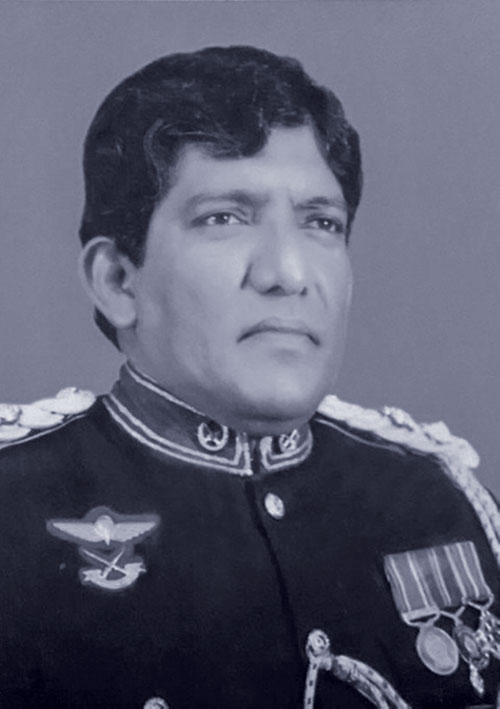
“MY JOURNEY WITH THE COMMANDO REGIMENT” BY LIEUTENANT COLONEL SUNIL PEIRIS reviewed
by Merril Gunaratne, Retd. Snr. DIG Police
This book is an autobiography of an innovator, discoverer, and explorer whose accomplishments bore the stamp of novelty and a new direction in the art of war. Lieutenant Colonel Sunil Peiris was only a captain with a mere nine years service in the army, when he was handpicked in 1977 to produce or assemble a new force or band of elite men to face any hostage or hijack situation that may arise with the inauguration of the new national SriLankan Airlines.
Incurring the ire and envy of many others barring a few in the army, he not only rose to the daunting challenge before him, but pioneered a fighting force, a regiment rather than a mere 100 men, which with the passage of time became the forerunner to the famed and feared ‘Special Forces’ of the Army. He created its nucleus, laid it’s foundation, and his regiment emerged as the answer to the most dangerous situations that beset defence forces in the face of the scourge of terrorism in the north and east of the country.
His story, narrated with telling force against the backdrop of envy, jealousy and impediments in his way is one of tears and toil. But for all his disillusionment, he eventually won recognition for being a visionary, a contributor to the most daunting standards in prosecuting a war and, above all, as someone who offered a new approach to the art of war against a new enemy – terrorism. These unique accomplishments was the work of a young officer mature beyond his years, without the support of many superiors in the army. It would therefore not be wrong to call Sunil Pieris the “man of his time” in the defence forces.
President JRJ’s directive to the young captain was in a way specific, but in another respect, hazy and ambiguous. The new force to be set up was to contend with hijacks and hostage taking. But the directive also left ample room for Sunil to innovateas exact details about how he was to set about his assignment were not part of the presidential fiat. It was probably such scope for maneuver that inspired Sunil to go beyond the fiat. His instinct and determination dictated the rest.
When Sunil undertook his mission, terrorism had yet to emerge as a major scourge following ethnic disturbances of 1983. There were sporadic forays by terrorists, with attacks on police stations, the murders of Alfred Duraiappah and of isolated policemen. It took some time for the defence establishment to realize that a storm was to follow the relative calm. The, defence forces in late 70’s were not exactly equipped to deal with this new type of warfare. Terrorists were an elusive enemy with emphasis on stealth and surprise and where they gunned down targets in small groups. They practiced the lesson of Mao Tse Dong that “we hit when you run, run when you hit”. With time, police proved “easy prey” for the terrorists. National intelligence was groping in the dark, and army troops realised that conventional methods of war were hopelessly misplaced against the new adversary who avoided confrontations and preferred to spring surprises.
Lt. Colonel Sunil Peiris was way ahead of times. Exploiting scope to maneouvre by a fiat that somewhat lacked precision and clarity, Sunil, confidence overflowing after his successful efforts to create an admirable outfit against hijacks, saw prospects of using the same methods employed for enlistment, training, discipline, and a rigorous work ethic, to enlarge numbers from a Commando Squadron in 1980 to a Commando Regiment in 1986. He envisioned that his outfit could emerge as a “broad spectrum antibiotic” to deal with a variety of adversarial threats. He was a visionary who saw the need for the army to undertake search and destroy missions, Long Range patrolling, operations behind enemy lines, Covert operations and urban anti terrorist operations; and all this before terror attacks transformed from a trickle to a torrent after the ethnic disturbances of 1983. The military establishment was fortunate that Sunil advanced from creating a small body of men to satisfy the fiat of president JRJ, towards assembling a Regiment in stages to come to grips with the new type of warfare unleashed by terrorists. The elite Commando Regiment that was his creation produced officers whose virtues were loads of courage and daring, endurance, resilience and supreme confidence born out of varied skills required in extremely dangerous and testing situations. The word “cannot”, could not find space in the commando lexicon.
Sunil not only went down in history for pioneering the precursor to the “Special Forces”, but also, by producing a Commando Regiment with exceptional standards, proved a source of inspiration to other military formations too to emulate the professionalism of the Commandos. He left his imprint firmly on the army, and carved a niche in the annals of military history. He foresaw events ahead of time, prepared and equipped an organisation to overcome emerging challenges, and by raising professionalism to dizzy heights, infected formations around the commandos . His accomplishments therefore had a pervasive impact on the army by serving as a tonic to invigorate other regiments, battalions and formations.
Lt Colonel Sunil Peris, in his book, devotes considerable attention to his spouse, Manisha and his family members. He was deeply grieved by the tragic death of his brother from the Air Force, Eksith Peiris, and his decision to retire in the quest for medical treatment for his wife in the U.K. demonstrated the extremely caring and humane side of his character. He was fortunate that the magnanimity of President JRJ ensured his return to the Army after treatment for Manisha in the U.K.
The last 10 pages of Sunil’s book, pages 210 to 216, are extremely poignant. His presentation of the circumstances which led to his decision to retire, the sorrow that engulfed him in the aftermath of his decision, his grief in leaving the army that was his passion and to which he contributed like no other, may make the eyes of many a reader moist. Sunil was an upright, honourable soldier, and the order by a person in the political establishment to simply liquidate youth was anathema to him. Knowing that further confrontations were likely, he, the type who was not likely to beg and crawl, took the unalterable decision to terminate his career. We have to accord the highest accolades to an officer who stood unflinchingly by his principles, regardless of consequences; and he well knew the sacrifices he had to make, leaving a career laced with novelty, innovation, reform, a legacy which none other could boast of at that time. His story in the book thus had a sad ending. Perhaps the best stories to read are those which do not climax with happy endings.
How do we assess this officer with a robust, imposing appearance, and yet so personable and caring in his relations with those who made his acquaintance? His career was short, a mere 20 years, when he took the unwavering decision to uphold standards and principles and retire in the face of interference. This step alone singles him out as someone extraordinary and exceptional, for those of such ilk are a rarity in our country. His career was laced with accomplishments which constituted a legacy bequeathed to future generations to emulate. His reach even enveloped the police, for their Special Task Force was conceptually inspired by him. There is no harm in the repetition that his influence invigorated other regiments, battalions, and formations of the Army as well. His leadership too was one of precept and example, for he was always the spearhead in dangerous missions. Leading the parachute jumps in Agra, India, come to mind. It is difficult to imagine that so young an officer had acumen to be a visionary, to administer with finesse, evolve structures and organisations, raise the bar in matters of enlistment and training, be extremely solicitous about the wellbeing of his men, and impress his peers and the defence establishment that he was an officer who possessed both métier and mettle to advance to the summit of the army in the fullness of time. What is particularly remarkable about Lt. Colonel Peiris was that he accomplished the impossible amidst brickbats and obstacles of jealous individuals above and around him. That he had to play ‘solitaire’ in what he did, enhanced his repute even further. He was undoubtedly a man for all seasons. The book is certainly timely, for many today may not remember who was responsible for the roots of the Special Forces. The name of Lt. Colonel Peiris should be suitably engraved as to remind posterity that he was the father of the commandos. This is the least that can be done to an officer who left such a legacy. We have also to remember that he had been exceptional and unique in not craving for promotions and medals in retirement. Reading his book, we have to lament that he passed into the limbo of history, unsung and unwept.
MERRIL GUNARATNEFormerly
* Snr DIG Police
* Director General of Intelligence in MOD
* Advisor MOD
* Director of NIB
Features
Africa gaining ground in intra-regional cooperation
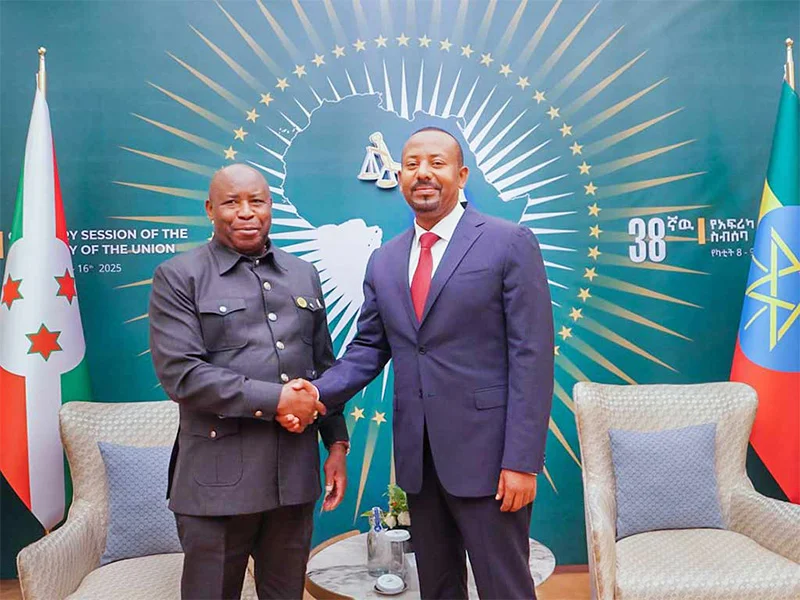
 At a time when the US is veering towards a policy of international isolation, it augurs well for international growth that Africa is emanating signs of stepping up intra-continental cooperation. Above all, Africa is in the process of proving that she could ‘stand-alone’ and be relatively autonomous in her ground-breaking growth drive.
At a time when the US is veering towards a policy of international isolation, it augurs well for international growth that Africa is emanating signs of stepping up intra-continental cooperation. Above all, Africa is in the process of proving that she could ‘stand-alone’ and be relatively autonomous in her ground-breaking growth drive.
Of course such epochal developments should not be construed as meaning that Africa would sooner rather than later be rid of the socio-political and economic bottlenecks that have been dogging her at heel for decades. What they mean is that she is managing these problems in a consistently constructive fashion currently.
We in South Asia in particular need to take note of these developments. This is mainly in view of the fact that SAARC is non-functional. It is not ‘dead’, as a former President of Sri Lanka tried to have us believe, but its virtual paralytic state at present should have discerning sections in the region concerned. It is robust regional cooperation in the fields that matter that helps a country in its growth and development and if SAARC is dysfunctional this is a serious setback for Sri Lanka and the region.
Closer integration into BIMSTEC and ASEAN is certainly desirable but if governments are having Sri Lanka’s best interests at heart it is primarily to the SAARC region that they need to look. For instance, how Sri Lanka is hoping to further its growth prospects by not factoring in stepped-up and positive economic interaction with India and Pakistan, for example, is incomprehensible.
There is a strong regional dimension to any country’s economic growth and unless the relevant regional cooperative mechanisms are rendered operational, the desired level of national development could not be achieved in full. Hence the need to render SAARC fully operational once again.
However, unless and until governments of the region realize the urgency of meeting the above challenge, SAARC would remain in a state inertia. The pressing need is visionary political leadership at the regional level. Right now this is seriously lacking.
It would seem inappropriate and misleading at first blush to attempt to draw comparisons between the vast continent of Africa and the South Asian region in view of the latter’s comparative geographical smallness, but this is more so why Africa’s present exercises in intra-continental cooperation need to be positivey assessed. If Africa could be making some headway in intra-regional cooperation, given her ‘Giant’ status and her seeming unmanageability as a collectivity, why can’t South Asia, a comparatively physically small region? ‘This is the Question’.
While the above and connected matters of importance for regional growth need to be seriously studied by political leaders and policymakers of South Asia, they would be acting in the regional interest by taking a leaf or two out of Africa’s book of cooperative growth and development.
All watchers of international development should feel compelled to take a hard, discerning look at the 38th African Union (AU) Summit held in Addis Ababa, beginning February 15th this year. Interestingly, the Summit theme was, ‘Justice for Africans and People of African Descent through Reparations.’
Coincidentally, erstwhile Namibian leader Dr. Sam Nujoma passed away on the eve of the Summit. Nujoma was perhaps the last of those prominent leaders from Africa who doggedly championed the cause of the libration of his country and of the continent from the shackles of colonialism. More leaders of his ilk are required by the South in general and Africa in particular.
While the acquiring of ‘reparations’ for colonialism’s ravages could prove a very long-gestation project, it is vitally important for Africa and other regions that came under colonial control to keep the issue constantly in focus.
Meanwhile, Africa’s gains in economic cooperation under the AU need to be studied appreciatively by the South and other regions in their interests. Some of the achievements of the AU under the aegis of the African Development Bank (ADB), as outlined by outgoing president of the Bank, Dr. Akinwumi A. Adesina at the Summit were: ‘515 million African lives were transformed over the past decade, including 231 million women, 127 million people gained access to better services in terms of health, 61 million people gained access to clean water, 33 million people benefited from improved sanitation, 46 million people gained access to ICT services, 25 million people gained access to electricity.’
Reports said that the Summit also, among other things, adopted the ‘African Financing Stability Mechanism’. Under this arrangement, $20 billion in debt refinancing will be provided for African nations. This will happen alongside the adoption of the ‘Strategic Framework on Key Actions to Achieve Inclusive Growth and Sustainable Development in Africa Report’.
The Report outlines key actions for Africa to ‘Achieve and sustain an annual growth rate of at least 7% of GDP over the next 5 decades.’
The above are a few aims that the AU intends to achieve going forward for the whole of Africa. But they are sufficient evidence of the current effectiveness of the collective organization. We see here a notable example in South-South cooperation which is a dire need today in the developing world.
South-South cooperation is the way to go particularly in consideration of the US’ current policy of virtually ridding itself of the past policy of helping the South by way of development assistance. Instead of bemoaning the fact that institutions, such as USAID, will be almost no more, the South would do well to take a hard look at Africa’s success stories in helping itself with little or no external assistance.
The discontinuation of US assistance needs to be seen as the proverbial ‘blessing in disguise’ by the South. Here is an opportunity for the Southern hemisphere to finally rid itself of those neo-colonial umbilical binds that have been preventing it from achieving genuine national liberation.
To be sure, the South is not going to meet with spectacular success by adopting the African model in the near term. But if the model is doggedly persisted with by enlightened governments of the South some success is certain to accure to the hitherto ‘Wretched of the Earth’, going forward.
Features
Mrs. World Tshego Gaelae …doing it differently

While most of our pageant winners get involved in frivolous activities, during their reign, the 40th Mrs. World pageant winner, Tshego Gaelae, from South Africa, is keen to bring into the spotlight her country’s potential.
Before her departure for the Mrs. World pageant, held in Las Vegas, in the USA, in January, the Lawyer, Entrepreneur, Model and Digital Creator, said:
“I’m so excited to be sent not only as a delegate but a representative of those hopeful hearts that always want to see South Africa’s potential shine and win. I stand on the shoulders of icons, world champions, the Queens that have gone ahead of me, and of the world leaders that continue to ensure our global participation and impact.
“Thank you everyone for the support so far!”

A coke and a smile…with Sprite Cucumber her pick
Referring to the interview for the position of Mrs. World, Gaelae said: “We get to bring our most authentic self to advocate for the causes we want to advance through the most prestigious platform that is the Mrs World Pageant. What an honour to have such experienced judges who care to hear about what I want to achieve.”
The lead up to the prestigious Mrs. World event was doubly exciting for Gaelae as she got the opportunity to display not only her country’s creations but also check out certain nostalgic venues.
“We received the honour of being at the Elvis penthouse suite, at the Westgate Vegas! The space is spectacularly filled with iconic and historic presence, fit for the king that was Elvis Presley.”
The Mrs World participants spent an evening honouring Victoria’s Voice Foundation and Gaelae’s gift to the Foundation was a canvas shirt with President Nelson Mandela’s face printed on it. The shirt can either be worn or displayed in a frame, and Gaelae says she is so glad to have had the opportunity to present a piece of her beloved South Africa.”

The bangles she gifted to all the participants at the Mrs. World pageant
Gaelae went on to say: “I always joke about being Zulu in my past life, but on a serious note, I love the Zulu Culture so much, that I gifted my Mrs. World Pageant Sisters some beautiful bangles.”
They also visited the special Coca-Cola Store in Vegas, and got to taste some interesting flavours. And Gaelae’s pick … “Sprite Cucumber definitely wins for me.”
Mrs. World enthusiastically said that one of the biggest gifts she received out of her Mrs South Africa journey was that of sisterhood, “and it’s so amazing to come to the Mrs. World pageant and find it once again,” she went on to say.
“My roommate was the gorgeous Ishadi Amanda from Sri Lanka! We bonded with no delay, and laughed till we cried! I was literally paired with a sister from another mother.”
Tshego Gaelae also had a special comment to make regarding the article we published about her in The Island of 6th February, 2025.
“Thank you so much for the beautiful article and coverage.”
Features
Activate all that is good for your skin

 Hi! This week, too, I’m giving you some easy to prepare tips to help you achieve all that is good for your skin.
Hi! This week, too, I’m giving you some easy to prepare tips to help you achieve all that is good for your skin.
* Cucumber and Lemon:
Mix equal parts cucumber and lemon juice and apply the mixture on your face (avoiding eyes). Allow it to sit for 10 minutes and then rinse it off. This natural face beauty tip will brighten your skin tone and lighten blemishes, if used on a regular basis. The best aspect is that it is appropriate for all skin types!
* Tomatoes:
Scoop up the pulp of one tomato and apply it evenly on your face. Allow it to dry for 15 minutes before washing it off with warm water … to reveal a naturally radiant skin.
* Green Tea:
After steeping green tea in hot water for about 05 minutes, allow the tea to cool. Transfer the tea to a spray bottle and spray, in short bursts, or place a little amount onto a cotton pad and pat on your face after thoroughly cleaning it.
* Chilled Tea Bags:
A chilled black or green tea bag does wonders for your skin. This natural face beauty technique may rapidly reduce puffiness around the eyes, making them appear brighter and more alert. Place the tea bags on your eyelids and relax for 05 to 15 minutes while they perform their magic.
* Honey:
Applying a small amount of honey to your face every day is an excellent approach to getting healthy, bright skin. Honey’s absorbing properties draw out pollutants from skin pores and help completely cleanse your skin. Honey’s antibacterial effects heal and prevent acne. Honey’s antimicrobial qualities soothe skin irritation and protect skin from bacterial infections. Honey, has remarkable moisturising effects and is also a terrific relief for dry skin.
* Coffee:
Exfoliating on a regular basis improves the appearance of your skin, making it look younger and healthier. For those who enjoy coffee, a homemade coffee scrub is all the weekly nourishment your skin requires. Coffee’s anti-inflammatory qualities minimize redness, irritation, and acne. All you need to do is mix freshly ground coffee beans, coconut oil, and brown sugar to your desired consistency in a bowl. Massage gently in circular strokes over your face, then rinse with warm water. After using an exfoliant, always moisturise.
-

 Sports5 days ago
Sports5 days agoRemarkable turnaround for Sri Lanka’s ODI team
-
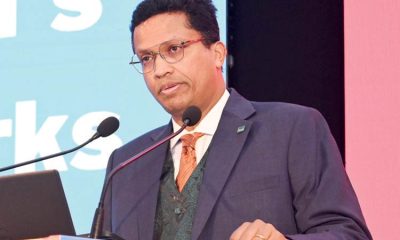
 Business5 days ago
Business5 days agoUN Global Compact Network Sri Lanka: Empowering Businesses to Lead Sustainability in 2025 & Beyond
-
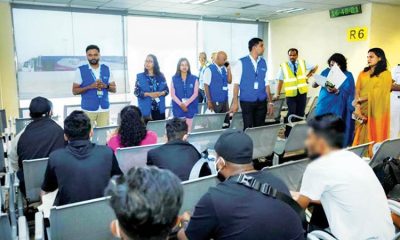
 Features5 days ago
Features5 days agoScammed and Stranded: The Dark Side of Sri Lanka’s Migration Industry
-
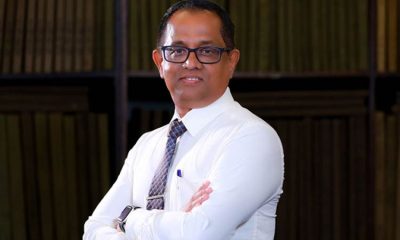
 News6 days ago
News6 days agoSpeaker agrees to probe allegations of ‘unethical funding’ by USAID
-
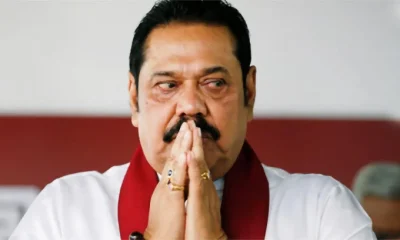
 Features4 days ago
Features4 days agoDon’t betray baiyas who voted you into power for lack of better alternative: a helpful warning to NPP – II
-
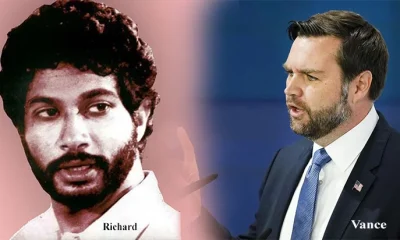
 Features4 days ago
Features4 days agoTwo films and comments
-

 Features7 days ago
Features7 days agoClean Sri Lanka and Noise Pollution (Part II)
-

 Editorial6 days ago
Editorial6 days agoCoal giant awakes, but uncertainty prevails











